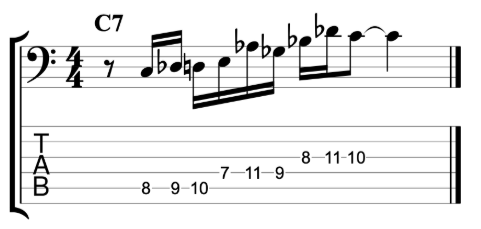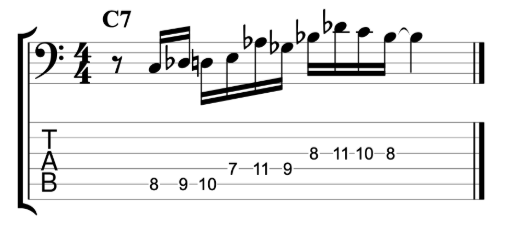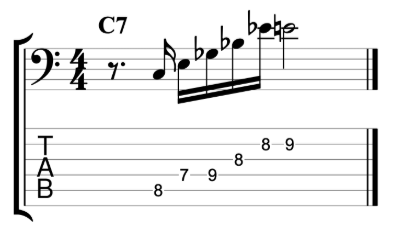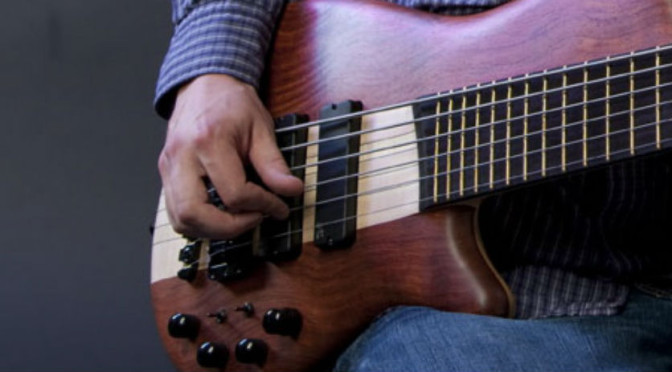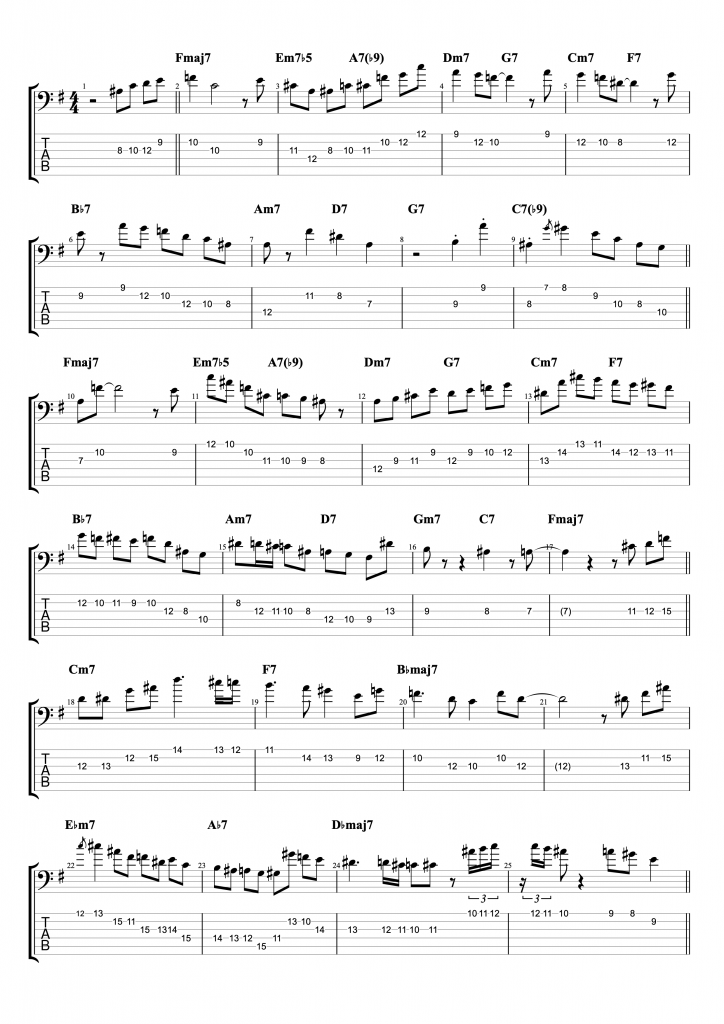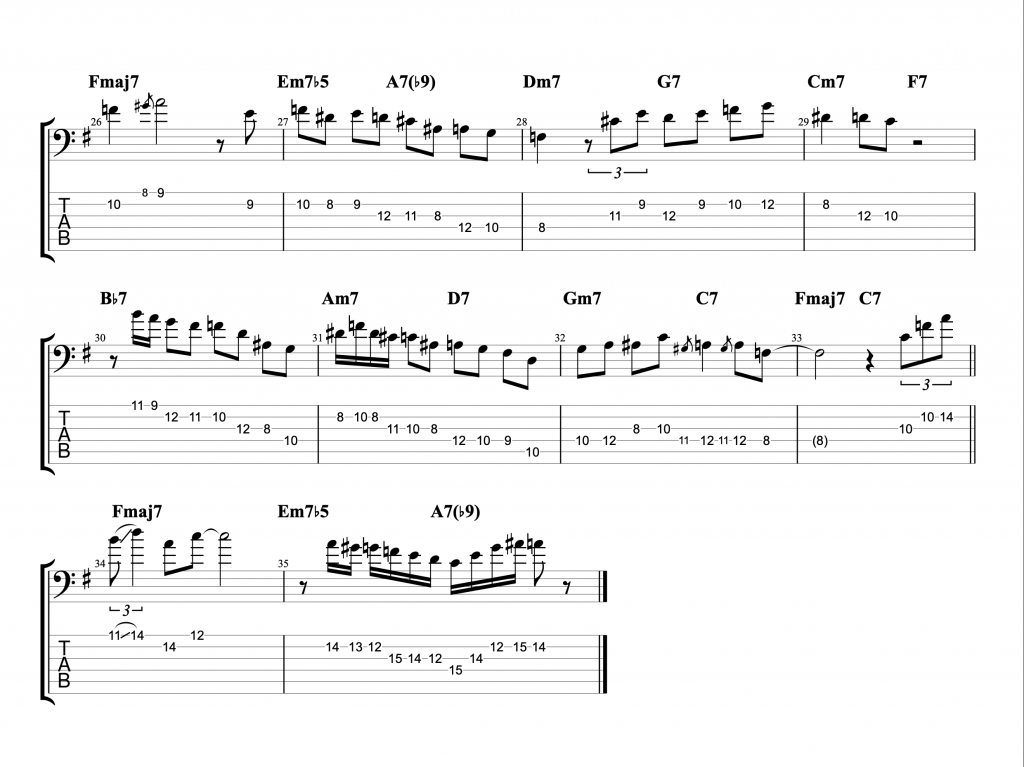Altered Pentatonic Jazz Lick on Fretless Bass – Bass Practice Diary – 2nd June 2020
Last week I featured a pentatonic scale that you can create by altering just one note in a standard major or minor pentatonic scale. This week I’ve put that altered pentatonic scale into practice. I’ve come up with a jazz lick on fretless bass that features both the standard and altered versions of the pentatonic scale.
The Lick

I’ve composed the line on a II-V-I-IV progression in the key of C major. I choose to use the IV chord rather than the more common VI7 chord in order to feature two different pentatonic approaches to playing on major 7th chords. On the Cmaj7 chord I’ve played an E minor pentatonic scale. It gives me the 3rd, 5th, 6th, 7th and 9th relative to the root note of the chord. On the Fmaj7 chord, I’ve used the altered version of the scale to create a lydian augmented sound. The notes are E, F, A, B & C#, 7th, root, 3rd, #4th, #5th relative to the F root note. It’s like an F# minor pentatonic scale, with an F natural root note instead of F#. It’s a sound that I featured in last week’s video.
On the II chord I’m using the obvious D minor pentatonic scale. I like to start my jazz lines inside the harmony and then take them outside. The altered version of the pentatonic scale does a really good job of spelling out the sound of an altered dominant chord. It helps me bring in some of those outside notes on the G7 chord V. The notes are G, Bb, B, Eb & F, which is root, #9, 3rd, b13 &7th. It’s like the notes an altered dominant arpeggio. You can think of it as C minor pentatonic scale with the root note lowered by a semitone to B.




